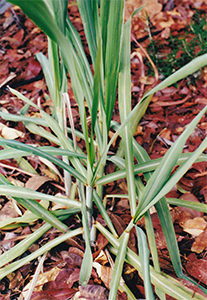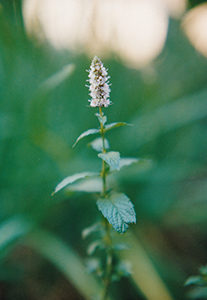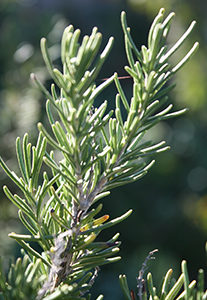Tea Through Time at Rancho Los Cerritos
Our new exhibit tells the story of how the Rancho’s diverse inhabitants and workers consumed this beverage and partook in its rich traditions. To this day, tea remains a beverage infused in ceremony, enjoyed by many.
What is Tea?
Tea has held a significant role in society, whether it was for medicinal purposes or to ward off hunger. Tea comes from the leaves of the shrub Camellia sinensis. The species name sinensis is Latin and means “from China.” Herbal teas or tisanes are made from plants other than C. sinensis, and can be brewed from leaves, flowers, fruit, seeds and even bark. It is speculated as to when the first cup was brewed but we do know that the primary use of the beverage across diverse cultures, including those in Mexico, Spain, and India, started with medicinal purposes. We see this influence at Rancho Los Cerritos by looking at the various herbs grown in the garden. For example, lemongrass and mint were grown for digestion, steeped rosemary leaves for boosting immunity, and flower blossoms were brewed to help calm the nerves.
Please click on the images with descriptions below to see a detailed image of the artifacts.
Packaged for Travel
Starting in the mid to late 1800s, lead-lined boxes or tins like our Black Painted Tea Tin with Courtyard Scene kept out light that would reduce the quality of the tea and allowed for easier transportation of goods as opposed to the Wop Hop Tea Tin, a larger transport container located in the Rancho’s food storage room, which usually contained smaller, measured packets of loose-leaf tea.
The Evolution of Tea Service
With serving of tea becoming more popular, many new accessories were introduced to help share and make the experience more enjoyable. For example, Queen Victoria was the first one to add a formal teapot (like our Silver Teapots) to the formal Tea Service Set to make the experience more extravagant while a Teapot with Warming Stand would let one dilute strong tea or re-wet used leaves. Historically, the English aristocracy combatted the bitterness of black tea by adding milk and sugar, so items such as the Sugar bowl and Creamer became part of the tea service. Chinese influence like the Ceramic Ginger jar, held and delivered ginger additives to one’s tea to not only enhance the flavor but also to add medicinal effects. The items here are all specific to drinking tea in the comfort of one’s home while the Chinese Tea Caddy with Tea Set gave people the ability, specifically Chinese railroad workers, to enjoy tea without needing to build a fire to boil water.
A Handle to Hold
Tea cups originally did not have handles because there was not a way for the handle to be attached to the cup and bear the weight of a full, hot container of liquid. In 1707, a German alchemist named Johann Friedrich Bottger created a hard paste that was strong enough to solve such a problem, thus, the advent of the individual English Tea Cup and the Purple Tea Set.












